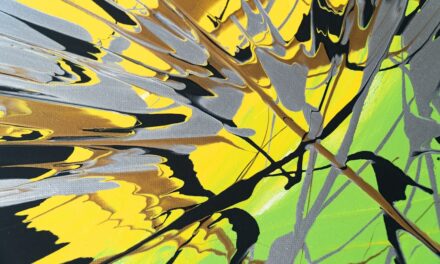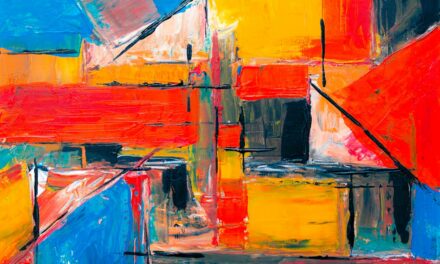The Museo di Capodimonte, located in Naples, Italy, has a rich and storied history that dates back to the 18th century. Originally conceived as a royal palace for Charles of Bourbon, the museum was established in 1738 when the king sought to create a residence that would reflect his power and taste. The site was chosen for its elevated position on the Capodimonte hill, which offered stunning views of the surrounding landscape and the Bay of Naples.
The palace was designed by the architect Giovanni Antonio Medrano, and its construction was completed in 1757. Over the years, the building evolved from a royal residence into a repository for art and culture, housing the extensive collection of the Bourbon dynasty. As the years progressed, the museum’s role expanded significantly.
In 1860, following the unification of Italy, the museum was officially opened to the public, marking a pivotal moment in its history. The collection grew as artworks were transferred from various royal residences and churches across Naples. The museum became a symbol of national pride, showcasing not only the artistic heritage of Naples but also that of Italy as a whole.
Throughout the 20th century, the Museo di Capodimonte underwent several renovations and expansions, ensuring that it remained a vital cultural institution. Today, it stands as a testament to the artistic legacy of Naples and continues to attract visitors from around the globe.
Summary
- The Museo di Capodimonte was founded in 1738 by Charles VII of Naples, and it was originally a royal hunting lodge.
- The art collection at Museo di Capodimonte includes works by renowned artists such as Caravaggio, Titian, and Raphael.
- The museum’s architecture and gardens offer a stunning backdrop for the art collection, with a mix of Baroque and Neoclassical styles.
- Temporary exhibitions and events at Museo di Capodimonte showcase a diverse range of art and cultural experiences throughout the year.
- Practical information for visiting Museo di Capodimonte includes details on opening hours, ticket prices, and transportation options.
The Art Collection at Museo di Capodimonte
The Renaissance and Baroque Masters
The museum is particularly renowned for its extensive collection of Renaissance and Baroque paintings, which includes masterpieces by some of the most celebrated artists in history. Among these are works by Caravaggio, Titian, Raphael, and Parmigianino.
A Diverse and Vast Collection
The museum’s collection is not only vast but also diverse, encompassing paintings, sculptures, decorative arts, and historical artefacts that reflect the rich cultural tapestry of Naples. One of the highlights of the collection is Caravaggio’s “The Flagellation of Christ,” a striking example of his dramatic use of light and shadow. This painting exemplifies Caravaggio’s ability to convey intense emotion and realism, making it a focal point for visitors.
Neapolitan Baroque and Beyond
Additionally, Titian’s “The Annunciation” showcases the artist’s mastery of colour and composition, while Raphael’s “The Madonna of the Pinks” offers a glimpse into his serene and harmonious style. The museum also houses an impressive collection of Neapolitan Baroque art, with works by artists such as Luca Giordano and Francesco Solimena, further enriching its artistic narrative.
Architecture and Gardens of Museo di Capodimonte
The architecture of Museo di Capodimonte is as captivating as its art collection. The palace itself is an architectural marvel, blending elements of Baroque and Neoclassical styles. Its grand façade is adorned with elegant columns and intricate detailing that reflect the opulence of its royal origins.
The interior spaces are equally impressive, featuring lavishly decorated rooms that once served as royal apartments. Visitors can explore the grand staircases, ornate ceilings, and beautifully furnished salons that transport them back to a time when the palace was a vibrant centre of royal life. Surrounding the museum is a sprawling park that adds another layer of beauty to the experience.
The gardens of Capodimonte are meticulously landscaped, featuring a mix of formal gardens and natural woodlands. Visitors can stroll along tree-lined paths, admire carefully curated flower beds, and enjoy panoramic views of Naples and its bay. The gardens also include several fountains and sculptures that enhance the serene atmosphere.
This combination of architectural grandeur and natural beauty makes Museo di Capodimonte not only a haven for art lovers but also a delightful retreat for those seeking tranquillity amidst nature.
Temporary Exhibitions and Events at Museo di Capodimonte
Museo di Capodimonte is not merely a static repository of art; it is an active cultural hub that regularly hosts temporary exhibitions and events. These exhibitions often focus on specific themes or artists, providing fresh perspectives on both historical and contemporary art. For instance, past exhibitions have explored the works of lesser-known Neapolitan artists or highlighted specific movements within Italian art history.
Such initiatives not only enrich the visitor experience but also foster a deeper understanding of the evolution of art in Naples and beyond. In addition to art exhibitions, the museum frequently organises cultural events such as lectures, workshops, and guided tours. These activities are designed to engage visitors of all ages and backgrounds, making art accessible to a wider audience.
Special events often coincide with significant anniversaries or cultural celebrations, further enhancing the museum’s role as a vibrant part of Naples’ cultural landscape. By offering dynamic programming alongside its permanent collection, Museo di Capodimonte ensures that it remains relevant and continues to inspire future generations.
Visiting Museo di Capodimonte: Practical Information
For those planning a visit to Museo di Capodimonte, practical information is essential for making the most of this cultural experience. The museum is conveniently located on Via Miano in Naples and is easily accessible by public transport. Visitors can take advantage of local buses or trams that connect to various parts of the city.
Additionally, there is ample parking available for those who prefer to drive. The museum’s opening hours vary throughout the year, so it is advisable to check their official website for up-to-date information before planning your visit. Upon arrival, guests are greeted by an impressive entrance that sets the tone for their experience within the museum.
Ticket prices are reasonable, with discounts available for students and seniors. Guided tours are also offered for those who wish to delve deeper into the history and significance of the artworks on display. Audio guides are available in multiple languages, providing visitors with valuable insights as they explore the galleries at their own pace.
Facilities such as restrooms, cafes, and gift shops enhance the overall visitor experience, ensuring that guests can enjoy their time at Museo di Capodimonte comfortably.
Educational and Family Activities at Museo di Capodimonte
Museo di Capodimonte places a strong emphasis on education and family engagement through various activities designed to inspire curiosity about art and culture. The museum offers tailored educational programmes for schools that align with national curriculum standards. These programmes include guided tours specifically designed for students, interactive workshops where children can create their own artworks inspired by the museum’s collection, and special events that encourage families to explore together.
Family-friendly activities often include scavenger hunts throughout the galleries, where children can learn about different artworks while having fun searching for specific details or themes within them. Additionally, during school holidays or special occasions, the museum hosts workshops that allow families to engage in hands-on art-making experiences. These initiatives not only foster an appreciation for art among younger generations but also create lasting memories for families visiting together.
Dining and Shopping at Museo di Capodimonte
A visit to Museo di Capodimonte would not be complete without indulging in its dining options and shopping opportunities. The museum features a café that offers a selection of refreshments ranging from light snacks to more substantial meals. Visitors can enjoy their food while taking in views of the surrounding gardens or relaxing in one of the museum’s elegant indoor spaces.
The café prides itself on using local ingredients to create dishes that reflect Neapolitan culinary traditions. For those interested in taking home a piece of their experience, the museum shop provides an array of merchandise related to its collections. Visitors can find high-quality reproductions of famous artworks, books on art history, postcards, and unique souvenirs that capture the essence of their visit.
This shopping experience not only allows guests to commemorate their time at Museo di Capodimonte but also supports the museum’s ongoing efforts to preserve its collections and promote cultural education.
Museo di Capodimonte: A Cultural and Historical Landmark
Museo di Capodimonte stands as a cultural and historical landmark in Naples, embodying centuries of artistic achievement and royal heritage. Its significance extends beyond its impressive collections; it serves as a vital institution for preserving Italy’s artistic legacy while fostering contemporary cultural dialogue. The museum’s commitment to education, community engagement, and innovative programming ensures that it remains relevant in today’s rapidly changing cultural landscape.
As visitors explore its galleries filled with masterpieces from renowned artists or wander through its beautifully landscaped gardens, they are reminded of Naples’ rich history and vibrant artistic scene. The museum not only showcases art but also tells stories—of kings who once resided within its walls, artists who poured their souls into their work, and generations who have been inspired by its treasures. In this way, Museo di Capodimonte transcends its role as a mere repository; it becomes a living testament to human creativity and cultural heritage that continues to resonate with audiences worldwide.
If you are interested in learning more about art techniques, you may want to read an introduction to the art technique encaustic (hot wax) painting. This article explores the history and process of this unique painting method, which has been used by artists for centuries to create stunning works of art. It provides a fascinating insight into the world of encaustic painting and how it has evolved over time.




